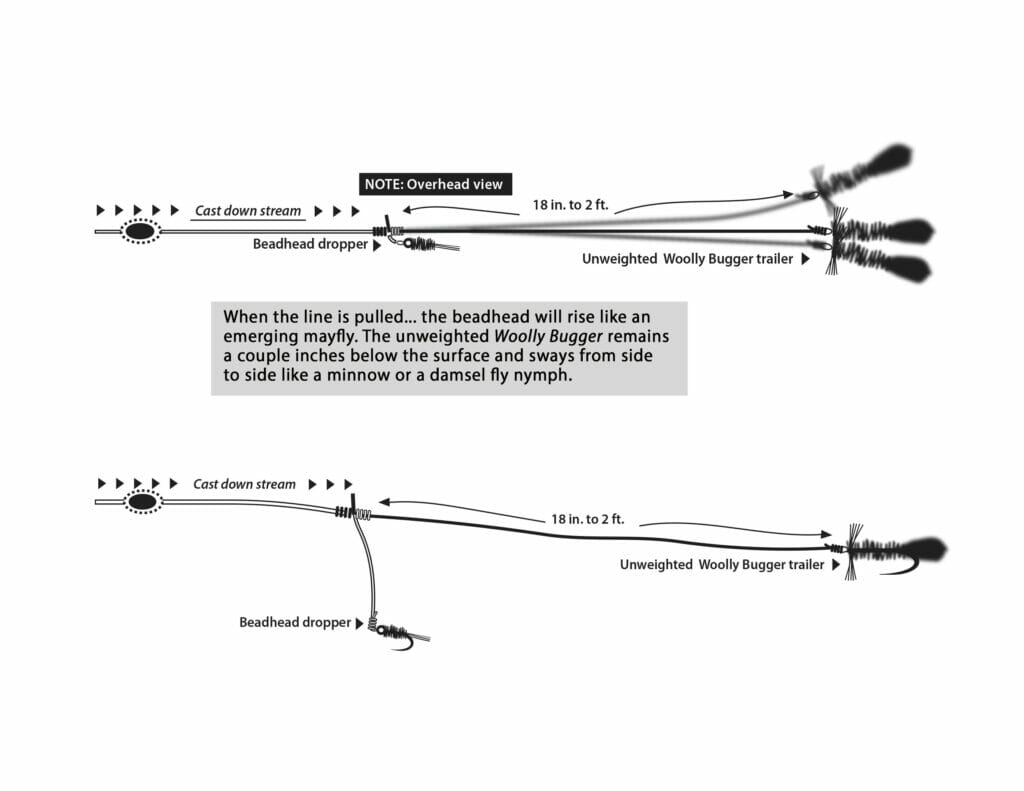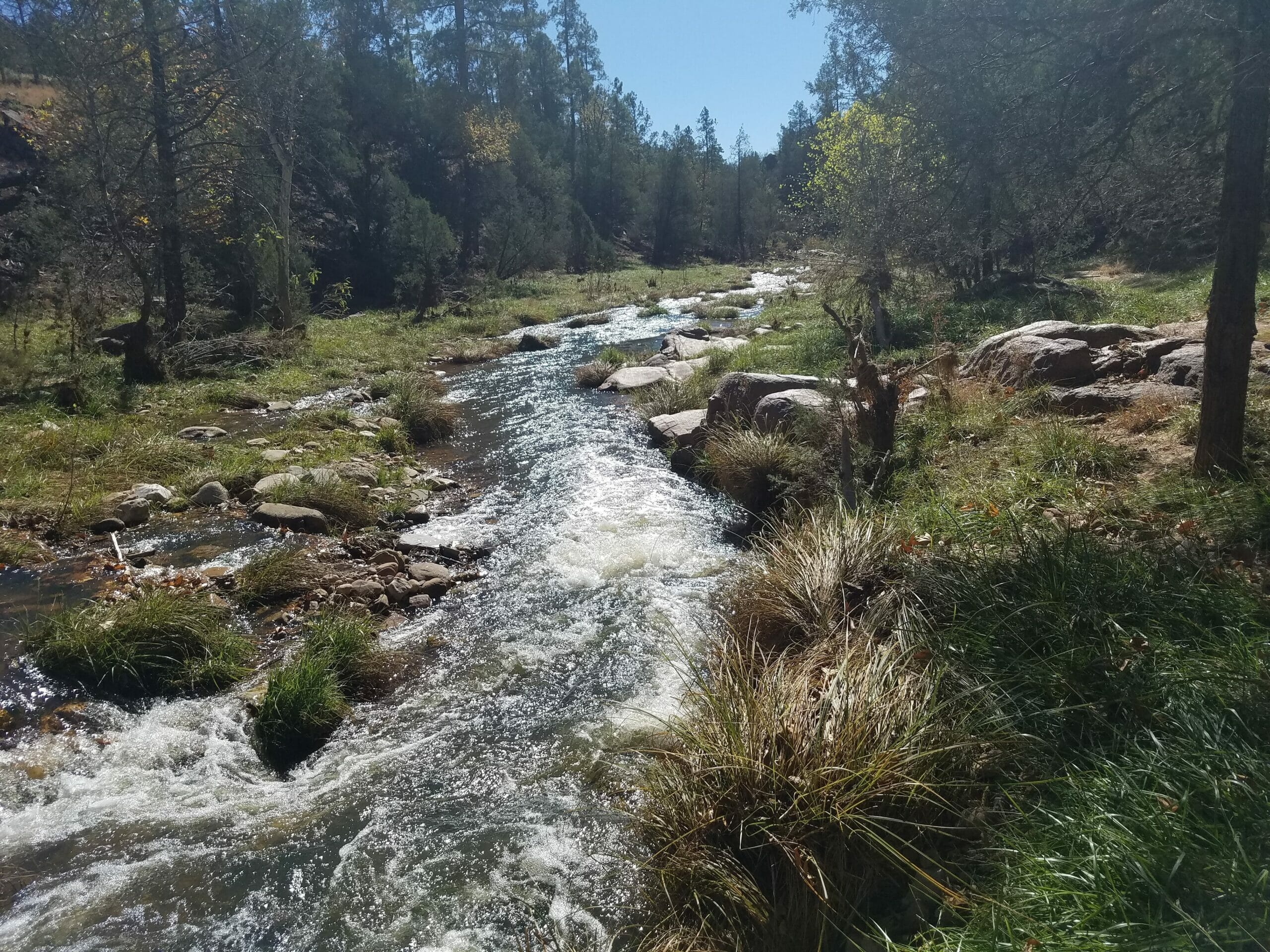By Jim Strogen
As a wet fly fisher, I love to dance my nymphs, Woolly Buggers and leeches downstream in front of rocks and log jams.
This strategy surprises many of my friends. They worry about being visible to the fish, and stirring up the creek as they approach a hole.
In the small streams that I like to fish, I try hard not to enter the water. Although I am no longer willing to crawl on the ground to approach the stream, I do use bushes and trees to hide my profile.
Downstream fishing has some distinct advantages. Often I will encounter several currents entering pools. I can fish each of those currents without having to make an extra cast.
That is really valuable on a small stream. I work the nearest current seam and let my flies drift down through the likely holding spots, dancing my flies the whole way down. As I bring the flies back upstream, I do it in short spurts and drops to entice a strike and to make my offerings look like the real thing.

Once I have covered a section, I can mend my line to cover some slack water in the run, or pull the fly upstream far enough that I can feed it down another seam. I use a two-fly rig that provides different movement for each fly. Generally, the dropper fly is a bead-head and the trailer is often an unweighted Woolly Bugger.
These two flies in tandem mimic an emerging nymph when the line is paused or stripped, and a struggling damselfly nymph when dropped downstream, or a fleeing minnow as I strip the flies upstream. I often have an indicator about four feet up the leader from the flies that allows me to
gauge where my flies are in relation to the obstacle I am trying to tease a fish from.
Jim Strogen, is the youth education coordinator and conservation chair of the Gila Trout Chapter of TroutUnlimited in Payson, Ariz.



